What is Cast Iron? Benefits, Uses, & Types
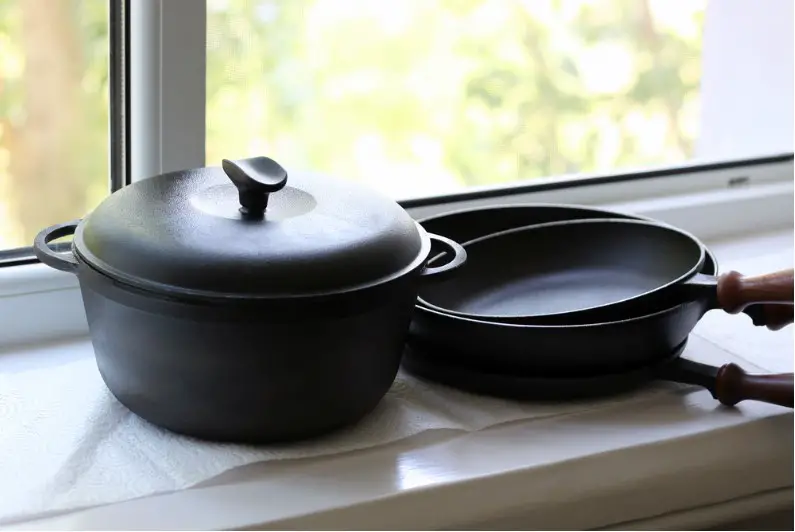
Cast iron, an extremely strong and durable material, has been a staple in kitchens for centuries. Cast iron is marked for good heat retention and even cooking and thus cast iron cookware remains a popular choice among home cooks and even professional chefs. Cast iron skillets and cast iron pans are cherished by generation after generation, are quite valued for their usefulness in many culinary applications and are appreciated for the rustic charm they allow in any kitchen setting. Whether for frying in an iron pan for cooking or searing in a cast iron skillet, both deliver great results in food that can only be perfected with cast iron. It is the general properties of cast iron that make it suitable in the preparation of the most varied methods of cooking, making cast iron utensils remain favourites in present-day cooking.
1 What is Cast Iron?
Cast iron is a type of iron-carbon alloy, which has an unusually high carbon content, usually comprising 2-4%. It is this alloying element that makes it prone to developing some properties, such as brittleness and low melting temperature, which gives it very high durability and strength. The material is known to have excellent heat retention and can bear very high cooking temperatures which are key to methods like searing and frying.
The manufacturing process of cast iron involves melting pig iron, scrap steel, and iron, along with limestone and carbon (coke). The molten mixture is then poured into moulds of various shapes to create different cast iron utensils, including cast iron skillets, cast iron pans, and other iron utensils used in cooking. Once cooled, these utensils retain many of the properties of cast iron, such as slow heat conduction and non-stick qualities when properly seasoned.
Types of cast iron include grey cast iron, which is the most common and used primarily for cooking due to its excellent thermal properties, and ductile cast iron, known for its toughness. Each type has unique properties of cast iron that make them suitable for a variety of uses in the kitchen, contributing to their longstanding popularity.
2 Types of Cast Iron
Cast iron takes many forms and remains very characteristic for their applications, especially in the cuisine. Of the many kinds, three are the most common: grey cast iron, white cast iron, and ductile cast iron.
Grey Cast Iron
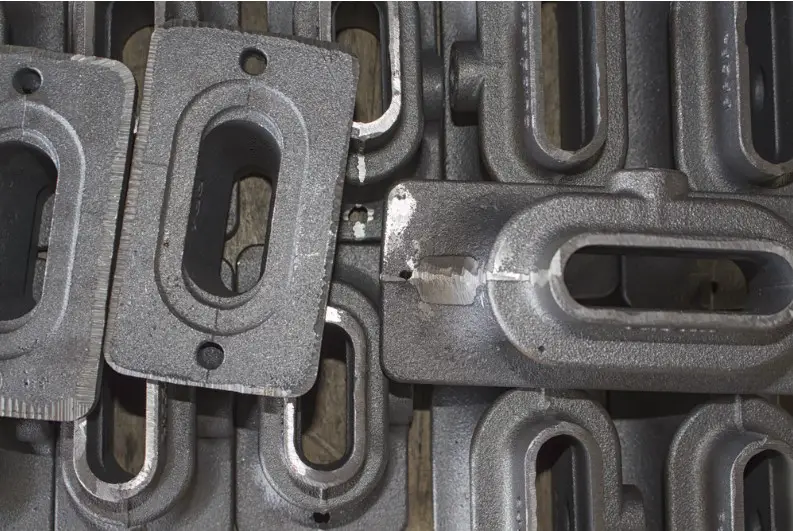
Grey cast iron is the most widely applied and used cast iron, especially in cast iron cooking category items like cast iron skillets and cast iron pans. It is named so due to the grey colour that it splinters into, with the graphite flakes contained in its composition. It offers excellent thermal conductivity given the foregoing discussion; hence, its use is widely evident in slow cooking and even distribution of heat. It naturally becomes non-stick upon seasoning, adding to its popularity in the kitchen.
White Cast Iron
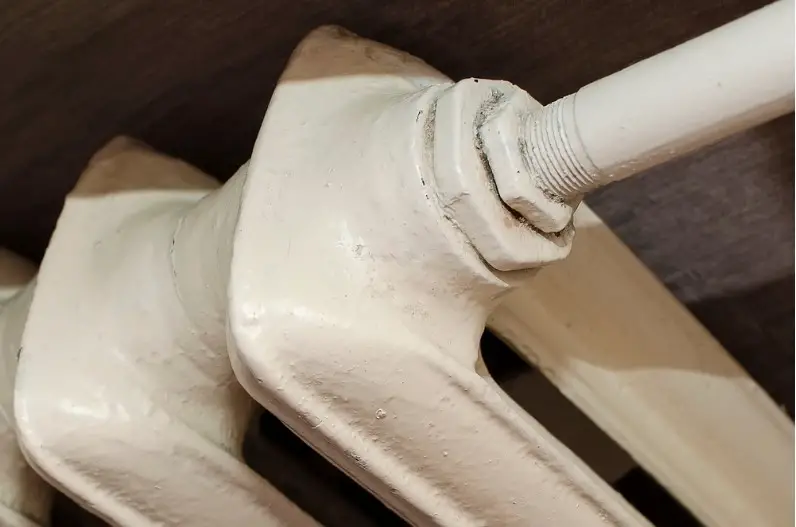
On the other hand, white cast iron has its carbon compounded as iron carbide; thus, it is harder but at the same time more brittle than grey cast iron. This alloy type usually finds an application where abrasion resistance is needed and generally finds little use in the application of cookware, since it is very brittle and offers no good thermal conductivity. Some industrial uses do apply it, and often it is used as an intermediate material before it is used to make malleable iron.
Ductile Cast Iron
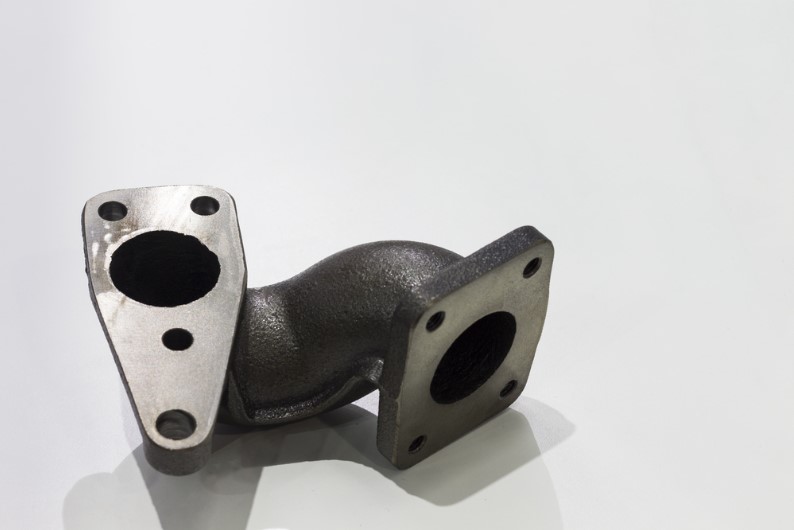
Also known as nodular cast iron, ductile cast iron contains small amounts of magnesium or cerium added to induce the formation of round graphite nodules in its structure. This adjustment significantly improves the tensile strength and ductility compared to grey cast iron. While not as common for cookware due to its cost, ductile cast iron is used in demanding engineering applications where a higher level of toughness is required.
Malleable Iron
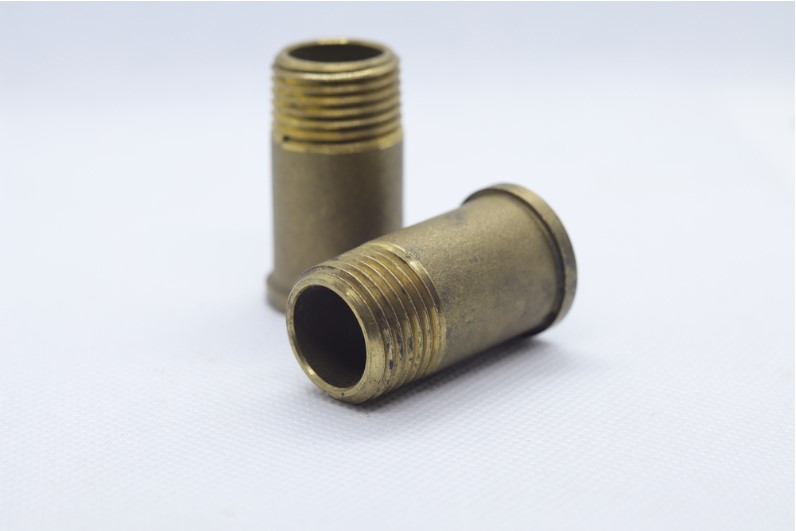
Malleable cast iron is prepared with white castings, heated to 950°c (1,740°f), and cooled for 24 – 48 hours. The iron inside the iron carbide transforms into graphite and a solid solution of ferrite plus carbon. Because the manufacturing process is slow, the surface tension forms spheroidal graphite particles rather than flake-like ones. The porous surface of malleable iron traps other abrasive debris and retains lubricants, non-abrasive wear particles, and non-abrasive wear particles. Due to its strength and wear resistance, malleable iron is commonly used for heavy-duty bearing surfaces, sprockets, chains, connecting rods, drive train and axle components, and railroad rolling stock.
3 Properties of Cast Iron
Cast iron is cherished in the culinary world and beyond for its exceptional properties, which include durability, excellent heat retention, and resistance to deformation. Each of these characteristics plays a crucial role in making cast iron particularly suited for a variety of applications, especially in cooking.
Durability
One of the most significant properties of cast iron is its remarkable durability. Cast iron utensils are known for their longevity, often lasting for generations with proper care. This toughness is due to the high carbon content, which strengthens the material against wear and tear, making cast iron skillets and cast iron pans resilient to frequent use. This enduring quality ensures that cast iron remains a cost-effective and sustainable choice for both home cooks and professional kitchens.
Heat Retention
Cast iron’s ability to retain heat is another prized characteristic. This property allows for even cooking, making it ideal for techniques that require consistent temperatures, such as searing meats or slow-cooking stews. The heat retention also means that cast iron is excellent for recipes that benefit from a gradual reduction in heat, as the cookware will remain hot long after it has been removed from the stove, continuing to cook the food gently.
Resistance to Deformation
Unlike many lighter metals, cast iron maintains its shape and does not deform under high temperatures. This resistance to warping under heat ensures that cast iron cookware maintains a flat, stable surface, which is crucial for even cooking. The robustness of cast iron makes it suitable for high-heat cooking methods, which other metals might not withstand without bending or warping.
4 Uses of Cast Iron
Cast iron’s versatility is showcased across a broad spectrum of industries due to its robust properties. However, its most celebrated uses are undoubtedly in the culinary world, where it has been a favoured material for centuries.
Cooking Applications
And rightly so, for there’s no metal that can compete with cast iron for cooking performance. Both professional and home cooks would swear by its excellence and wouldn’t. It is even ideal for browning, searing, and frying; perfect heat retention, and even distribution abilities by this cookware. It even serves very well to be oven-safe, used even in baking cornbread, pie, and even pizza at constant high temperatures.
Apart from frying and baking, cast iron skillets are perfect for grilling vegetables, meats, and bread, just like a grill, imparting a desirable char and flavour. Developed with proper seasoning, cast iron utensils even tend to form a natural non-stick surface, hence are very simple to use and clean, taking care of it in the correct manner.
Other Industries
Aside cooking, cast iron finds applications in a variety of fields:
- Automotive: Used in manufacturing engine blocks and gearbox cases due to its durability and strength.
- Construction: Employed in building structures, especially for pipes and fittings, due to its robustness and resistance to deformation.
- Agriculture: Used in machinery and tools because of its toughness and ability to withstand rough handling.
- Decorative: Utilised in ornamental pieces such as benches, lamp posts, and garden ornaments, where its resistance to weathering and aesthetic appeal are valued.
5 Cast Iron in Cooking

The benefits of using cast iron for cooking are numerous, making it a favourite choice for both amateur and professional chefs. Here’s why cast iron cooking tools like cast iron skillets, cast iron pans, and other iron utensils are essential in any kitchen.
Exceptional Heat Management
One of the most celebrated features of cast iron is its superior heat retention and even heat distribution. This makes cast iron pans and skillets ideal for a variety of cooking techniques, from searing steaks to slow-cooking stews. The ability to maintain and distribute heat evenly ensures that food cooks perfectly across the surface, reducing hot spots that can cause uneven cooking.
Versatility
Cast iron cookware is incredibly versatile and can be used for almost any cooking method. Whether you’re frying in an iron pan for cooking, baking a skillet cookie in a cast iron skillet, or simmering a sauce in a cast iron pan, these tools can move seamlessly from stovetop to oven. Their durability allows them to be used over open flames, on induction stoves, and even under broilers.
Natural Non-Stick Surface
When seasoned properly, cast iron cookware develops a natural non-stick surface, making it easier to cook with less oil and ensuring a quick release of food. This seasoning improves with use, enhancing the cooking surface over time. This feature is particularly advantageous when cooking items like eggs or pancakes that typically stick to less forgiving surfaces.
Flavor Enhancement
Cooking with cast iron can improve the taste of your food. The cookware’s seasoning absorbs flavours from previous cooks, which can then be imparted to whatever is cooked next, adding depth and richness to dishes. This is particularly notable when cooking recipes that benefit from a slightly smoky or grilled flavour.
Health Benefits
Using cast iron skillets and pans can increase the iron content in your food, particularly when cooking acidic foods like tomato sauce, which can pull more iron out of the pan. This added dietary iron is beneficial, especially for those with iron deficiencies.
Longevity and Cost-Effectiveness
Cast iron utensils are incredibly durable and can last for decades with proper care, often becoming family heirlooms. Unlike other cookware that may deteriorate or degrade over time, cast iron’s longevity makes it a cost-effective choice in the long run. This durability also means less waste, as there’s rarely a need to replace cast iron cookware frequently.
6 Is Cast Iron Good for Cooking?
Enhances Food Flavor
Cast iron cookware is known for its ability to enhance the flavour profile of dishes. The more you use your cast iron skillet or pan, the better it gets. As the cookware seasons over time, it develops a complex non-stick surface that also imparts a depth of flavour to foods cooked in it. This is particularly noticeable in recipes that benefit from a slightly smoky, caramelized crust, such as meats or hearty vegetables.
Even Heating and Improved Cooking Quality
One of the chief advantages of cast iron is its excellent heat retention and even heat distribution. This property ensures that foods cook evenly, reducing the likelihood of hot spots that can cause burning or uneven cooking. Whether you’re searing a steak in a cast iron pan or baking cornbread in a cast iron skillet, you can expect superior results with a perfect crust and evenly cooked interior.
Durability and Versatility
Cast iron utensils are incredibly durable and versatile. They can be used on the stove, in the oven, or even over a campfire, making them suitable for a wide range of cooking styles and environments. This adaptability means that a single cast iron skillet can be used for frying, baking, roasting, and more, replacing several more specialized pieces of cookware.
Health Benefits
Cooking with cast iron has tangible health benefits. Cast iron skillets and pans can fortify your food with iron, a critical mineral necessary for producing red blood cells and preventing anaemia. This is particularly beneficial when cooking acidic foods like tomatoes, which can leach more iron out of the cookware. Using cast iron is a natural way to increase your dietary iron intake, which is especially important for those with iron deficiency.
Cost-Effective Over Time
Though it may come as expensive at the onset, cast-iron cookware turns out to be economical in the long run. Rarely does one find himself going back to buy replacements for these utensils when proper care and maintenance are given out, leaving most other types of cookware that are likely to be damaged. The more the seasoning is done and perfected over time, the better the functionality of the cookware instead of non-stick pans that might lose their coating and functioning.
7 Cast Iron Utensils

The arsenal of cast-iron cookware includes a great variety of utensils, each destined for the execution of some particular class of culinary operation. Having in view the great durability and capability of cast iron, it probably renders malleable nature the most indispensable article in the kitchen of every country on the face of the habitable globe. We shall now see the varieties of iron utensils and their uses.
Cast Iron Skillets
Perhaps the most classic and versatile piece in all of the cast-iron cookware, the cast-iron skillet comes in sizes meant for every manner of frying, sautéing, and searing. They are also so versatile, going from stovetop to oven, that they’re ideal for dishes that need a finish under a broiler or for baking, such as frittatas and skillet cookies.
Cast Iron Pans
Similar to skillets, cast iron pans come in several forms, including deep pans for frying, griddle pans for pancakes and eggs, and grill pans with raised ridges for grilling meats and vegetables indoors. These pans share the same excellent heat retention and distribution properties as skillets.
Cast Iron Dutch Ovens
A cast iron Dutch oven is a heavy, thick-walled pot with a tight-fitting lid that’s perfect for slow cooking, braising, soups, and stews. Its excellent heat retention allows for long cooking processes without significant temperature fluctuations, making it ideal for complex flavours to develop.
Cast Iron Baking Pans
Cast iron baking pans and trays are used for making cornbread, pies, and even pizzas. The even heat distribution and retention ensure a perfectly crispy crust every time, whether you’re baking bread or roasting vegetables.
Cast Iron Woks
A cast iron wok is excellent for high-heat, fast-cooking techniques, especially stir-frying. The wok’s design allows for quick heating and cooking, with the added benefit of iron’s superior heat retention keeping the temperature consistent even when cold ingredients are added.
Cast Iron Griddles
A cast iron griddle provides a large, flat cooking surface ideal for cooking breakfast items like pancakes and eggs or for making grilled cheese sandwiches. It can be used over two burners for extra space and is perfect for cooking for larger groups.
Special Cast Iron Cookware
In addition to the more common pieces, there are various speciality iron utensils, such as sizzling platters for fajitas, muffin tins, and even fondue sets, all benefiting from cast iron’s heating properties.
8 Care and Maintenance of Cast Iron
Proper care and maintenance are essential to preserving the functionality and extending the lifespan of your cast iron cookware. Here are some key tips on how to care for and maintain your cast iron utensils to ensure they remain in top condition for years to come.
Seasoning Your Cast Iron

Seasoning is the process of applying a thin layer of oil to the surface of your cast iron and heating it to create a protective coating. This natural, easy-release surface improves with use and helps prevent rusting. To season your cast iron:
- Clean the cookware thoroughly.
- Apply a very thin coat of a high-smoking point oil (like flaxseed, vegetable, or canola oil) all over the surface.
- Place it upside down in a preheated oven at around 375°F for an hour.
- Let it cool in the oven. Repeat this process several times for a new pan or after deep cleaning an old one.
Cleaning After Use
To clean your cast iron skillet or pan after cooking:
- Let the cookware cool down slightly but clean it while still warm to the touch.
- Use a brush and hot water to remove food particles; avoid using soap if possible, as it can strip away the seasoning.
- For stubborn food residue, boil some water in the pan to loosen it.
- Thoroughly dry the cookware immediately after washing to prevent rust. You can place it on a warm stove to evaporate any remaining moisture.
Oiling After Washing
After each wash, apply a small amount of oil to the surface of the cookware. This helps maintain the seasoning and protect the surface from moisture, which can lead to rust. Use a paper towel to rub the oil in a thin, even layer all over the cookware, both inside and out.
Storing Cast Iron
Store your cast iron utensils in a dry place. If stacking pieces together, place a paper towel between them to absorb any moisture and prevent scratching the seasoned surfaces. Ensure good air circulation to avoid trapping moisture, which could cause rust.
Handling Rust
If rust appears, don’t worry—it’s usually fixable. Scrub the rust away with steel wool or a stiff brush, rinse and dry the cookware, and then re-season it. Taking care of rust promptly will prevent it from becoming a bigger issue.
Avoid Sudden Temperature Changes
Avoid exposing your cast iron cookware to sudden temperature changes to prevent cracking. For example, do not move your pan from the refrigerator directly to a hot stove.
9 Wrapping Up
Made to last, cast-iron cookware is ultra-durable and versatile—unlike any other. So, it’s an exceptional choice for the everyday home chef. You might also say cast iron is ideal for frying, simmering, or even baking; its heat is uniformly distributed to all corners, ensuring that your food is well-cooked at an even constant temperature level. In short—your culinary creations turn out better in cast iron.
It’s made out of cast iron; it lasts from generation to generation. This cookware becomes in many cases the prized family heirloom. This product’s durability makes it not only cost-effective but also sustainable, especially in today’s world where most products only survive very short lives.
Anyone in the market looking for new cooking ware should invest in cast iron—it is an enhancement to cooking performance and tradition in your kitchen. Well-seasoned cast iron cookware makes a great addition to anyone’s kitchen. It provides durability and delicious meals, but it also ensures good healthy utility through its natural non-stick surface.
FAQ's about Cast Iron
Is cast iron better than steel?
Yes, cast iron can be better than steel for certain applications due to its excellent heat retention, even heat distribution, and durability. It’s particularly favoured for cooking as it enhances flavor and can last for generations with proper care. However, steel may be preferred for its strength and lighter weight in other contexts, such as construction and industrial use.
What is the disadvantage of cast iron?
The main disadvantages of cast iron include its weight, as it is significantly heavier than materials like aluminum or stainless steel, making it less convenient to handle, especially in larger pieces. It is also prone to rust if not properly maintained, requiring regular seasoning and careful drying after washing. Additionally, cast iron can be brittle and may crack or break if dropped or subjected to a sudden temperature change.
Is cast iron good or bad for cooking?
Cast iron is generally excellent for cooking. It offers superior heat retention and even heat distribution, which is ideal for searing meats, frying, and slow-cooking. Cast iron pans can also be used in ovens and on grills, making them highly versatile. Additionally, when seasoned properly, they develop a natural non-stick surface.
However, cast iron does require more maintenance than other cookware, including regular seasoning to maintain its non-stick properties and prevent rust. It’s also heavier, which might be a drawback for some users. Overall, the benefits make it a popular choice for many cooking enthusiasts.
Does cast iron rust?
Yes, cast iron can rust if it is not properly maintained. Exposure to water and air can lead to oxidation, which causes rust. To prevent rust, it is important to season cast iron cookware regularly, which involves coating it with a layer of oil and heating it to create a protective barrier. Additionally, after washing, it should be dried immediately and lightly oiled before storing to keep it in optimal condition.
Community Q&A
About This Article
This article has been viewed 1154 times.



